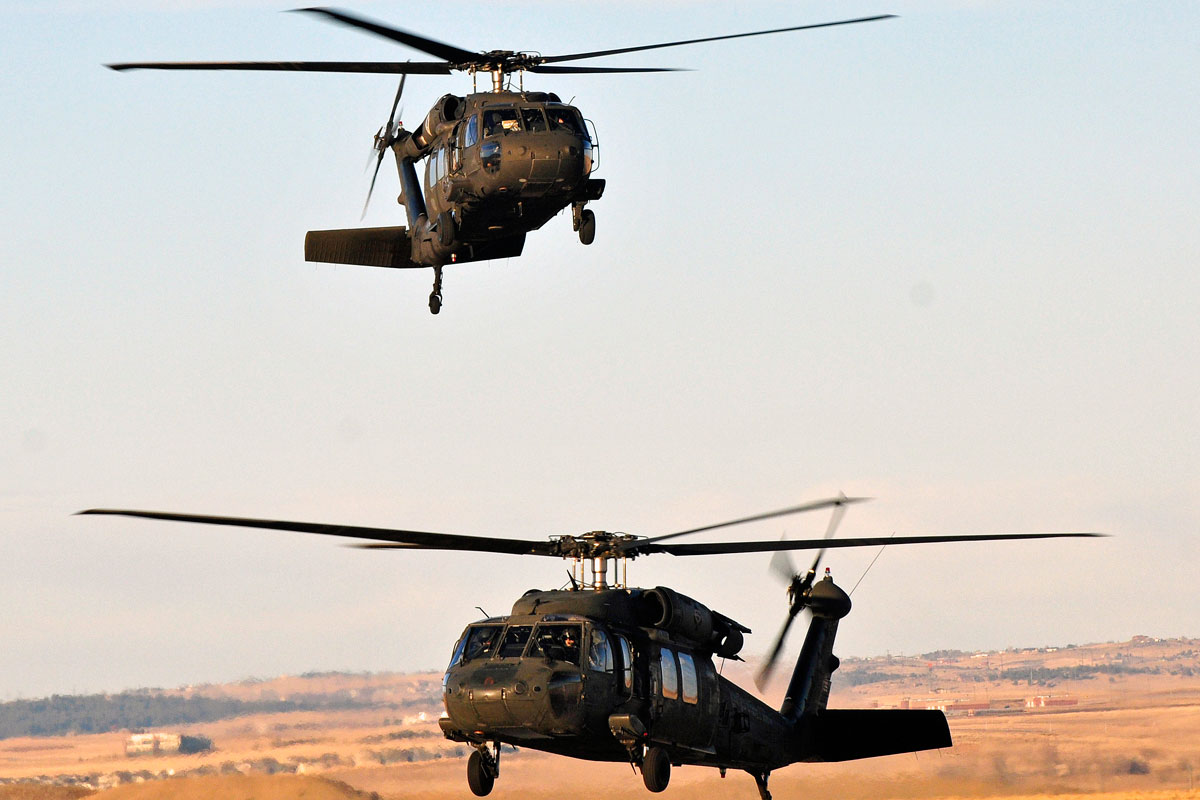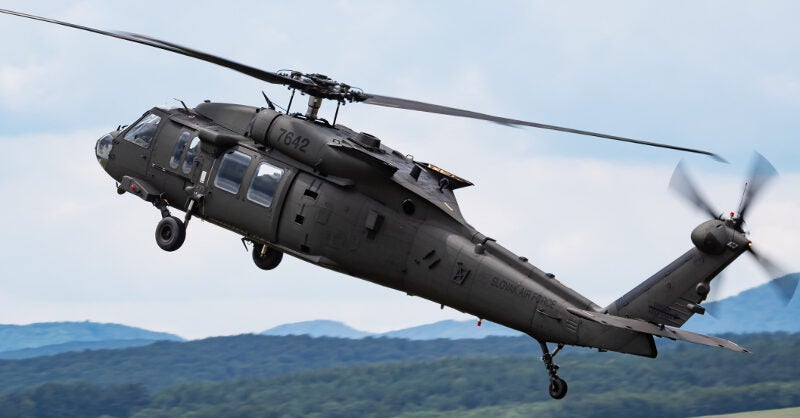The Facts About Uh-60 Uncovered
Wiki Article
The Single Strategy To Use For Uh-60
Table of ContentsThe Main Principles Of Uh-60 The Of Uh-60Fascination About Uh-60About Uh-60The Main Principles Of Uh-60 Our Uh-60 Statements
The pilot can make the helicopter create more or much less lift using a control called the, which raises or lowers the angle (also understood as) that all the blades make in the approaching air as they rotate around. For maximum lift, the blades must make a dramatically high angle.Moving the collective the other way moves the swash plates pull back, which pulls on the pitch links and tilts the blades to a shallower angle. At the end of the cumulative, there's a throttle attached by a wire to the engine. This resembles the accelerator of a car or the throttle of a motorcycle, raising or decreasing the engine rate, guiding the rotor to make essentially lift.
This is where the pivoting of the helicopter back and also forth occurs, which allows the rotor blades to provide a steeper angle when they're on the left side of the craft than when they're on the. In various other words, they generate even more lift on the left, tilting the craft to the right and also steering it in that direction.
The inventive swash plate system converts the pilot's movements right into the ideal activity of the rotor blades. Now, the following time you see a helicopter take off, you know the technicians behind it and can rest guaranteed that whoever is flying the craft knows what they're doing! For even more information watch this video clip: Was this write-up helpful? Yes, No.
Everything about Uh-60
This phase takes care of the research of medium velocity effect on the lower surface of helicopter blades. It intends to suggest a depictive limited component modeling (FEM) based on speculative observations of these type of impacts. Helicopter blades are big facility composite structures that operate in a serious vibrant setting.A semicontinuous strategy, where particular shell components are paired with pole aspects, was established. This strategy provides a great depiction of the damage mechanisms for thin composite frameworks made of two or 3 plies with the same positioning as well as material. In this paper, an extension of this semicontinuous strategy is defined.
Furthermore, this strategy is encompassed thicker woven composites with various ply alignments, with the introduction of specific natural elements. In the very first component of this phase, some details effect examinations are conducted and also evaluated in order to define the vital issues that have to be represented in the development of the design.
The damages regulation and also failure actions are described. A details user interface component exists. The modeling approach is verified on different impact examinations.
More About Uh-60
The helicopter descends due to unbalanced forces: The weight of the helicopters is more than the lift force of air. The Timeless Mechanics Department at St. Olaf College explains that also without the blades flexing up, there are equal as well as opposite forces acting upon the paper helicopter that trigger it to rotate - uh-60.This high stress results in equal and opposite rival forces that create the spin. The Physics of Paper Helicopters Autorotation (4:53) Framing the analysis in terms of Newton's Third Law of Activity, a set of equal and contrary pressures acting horizontally under each blade as well as on the body of the paper helicopter cause rotation.
These components are occasionally called blades, blades, rotor blades, wings, and even propellers. The blades supply the lift and also are variables that cause the helicopter to spin. The width of the 2 blades with each other equates to the size of the paper theme utilized to make the helicopter. The density of the blades is one layer of paper.
The size of the paper helicopter tail is one-third the width of the layout. The tail supplies the paper helicopter trip stability. The stabilizer is essentially the bottom idea of the tail. A horizontal layer in the tail creates the stabilizer. This fold likewise supplies the paper helicopter trip stability by moving the design's facility of mass downward.
The 6-Second Trick For Uh-60

Occasionally independent variables are not manipulated by the scientist yet monitored to see exactly how their modifications may influence other variables. Time (secs, days, years) is an independent variable that can be tracked to see just how it may influence various other variables (e. g., the growth of a plant). Dependent variables are what scientists observe, measure, or count in an experiment.
Independent variables are variables that may transform a reliant variable. That's the factor of an experiment: To discover what might or may not influence a reliant variable! These kinds of variables are the "impact" in a cause-and-effect connection. Managed variables vary that the scientist does not enable to alter.
A simple two-rotor paper helicopter is an excellent style choice to research this common trouble. The scientist can control any of the 4 more info here helicopter parts to determine what aspects affect the flight time of a paper helicopter. By readjusting a part of the helicopter, scientists are controling the independent variable to identify if this change affects the time the helicopter remains in the air (time in the air is the dependent variable).
All About Uh-60
try this web-site
Most experiments for this age group account for three kinds of variables: independent, dependent, as well as controlled. These variables are altered and also examined to figure out if they are the reason in a cause-and-effect partnership.
Often independent variables are not controlled by the researcher however kept an eye on to see exactly how their adjustments may influence other variables. Time (seconds, days, years) is an independent variable that can be tracked to see how it might affect other variables (e (uh-60). g., the growth of a plant). Reliant variables are what researchers observe, gauge, or matter in an experiment.
Independent variables are variables that may change a reliant variable. That's the point of an experiment: To discover out what might or may not influence a reliant variable! These types of variables are the "result" in a cause-and-effect relationship. try these out Controlled variables vary that the researcher does not permit to transform.
Uh-60 - An Overview
A simple two-rotor paper helicopter is a great design option to study this usual issue. The scientist can adjust any one of the 4 helicopter parts to establish what aspects influence the trip time of a paper helicopter. By readjusting a component of the helicopter, scientists are manipulating the independent variable to establish if this change impacts the moment the helicopter remains in the air (time in the air is the reliant variable).Report this wiki page